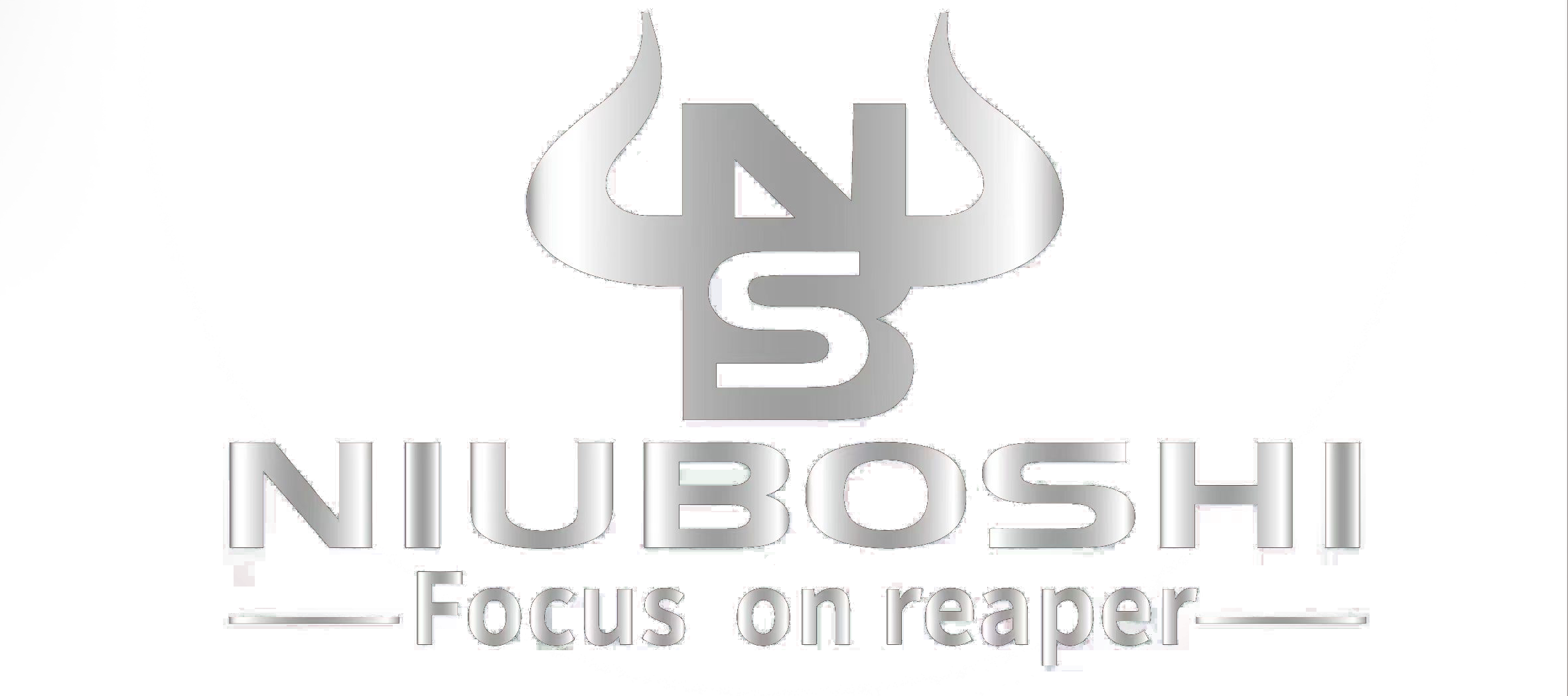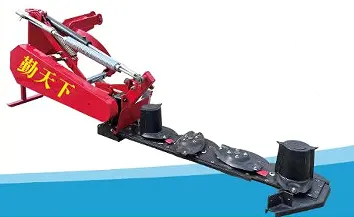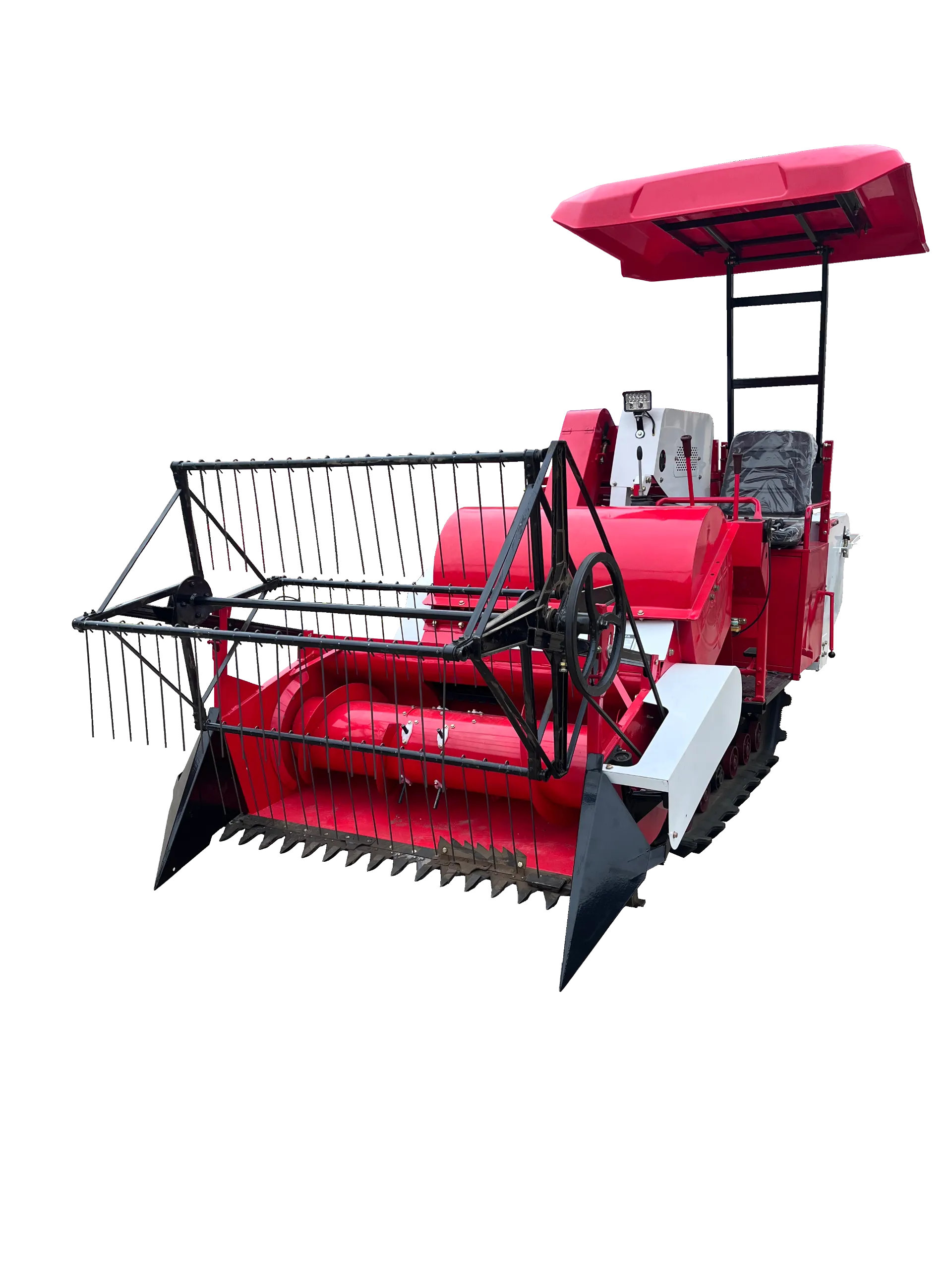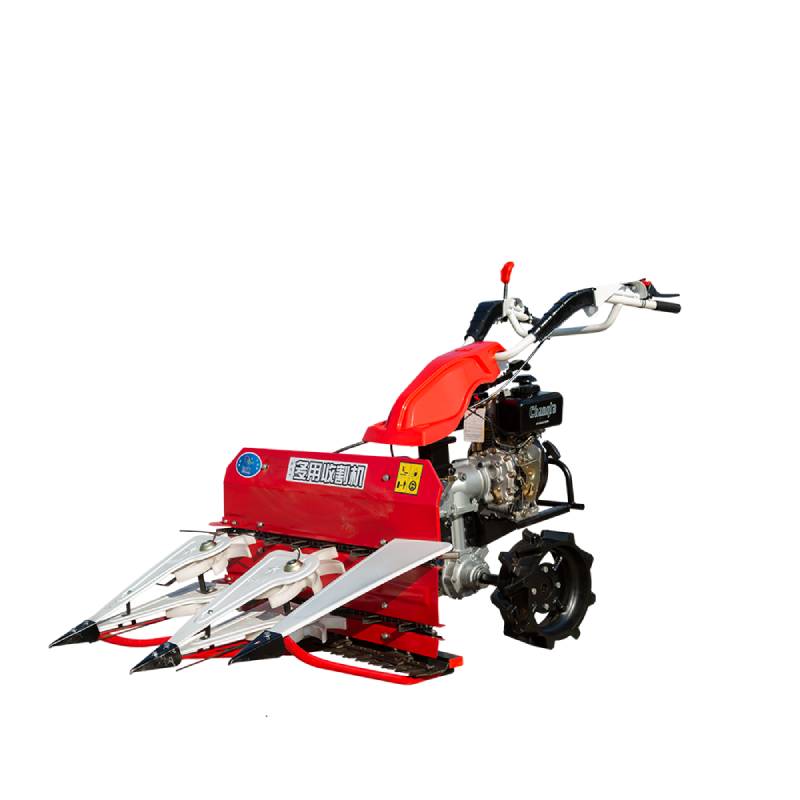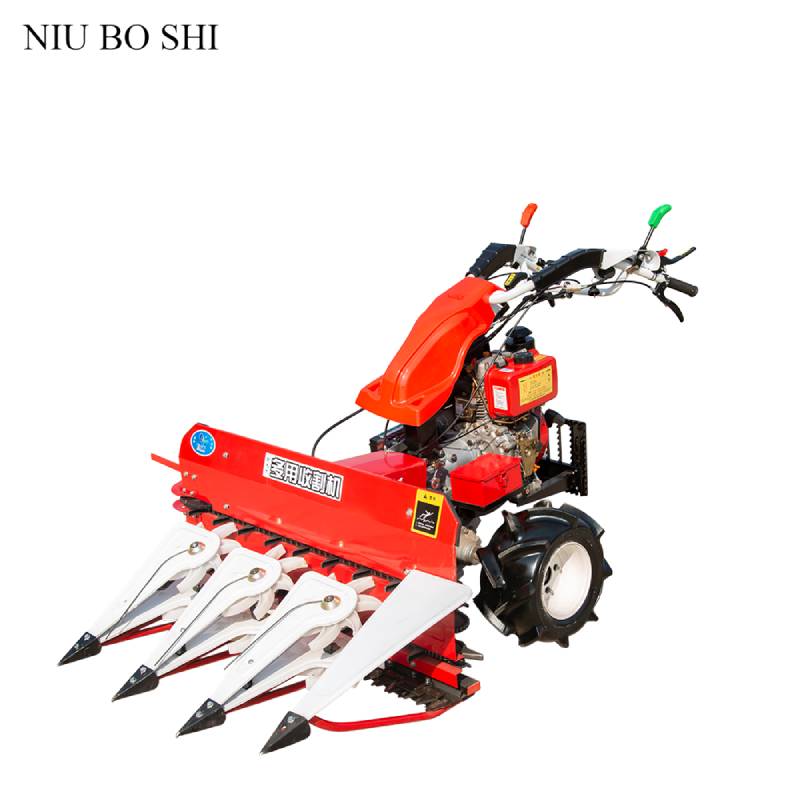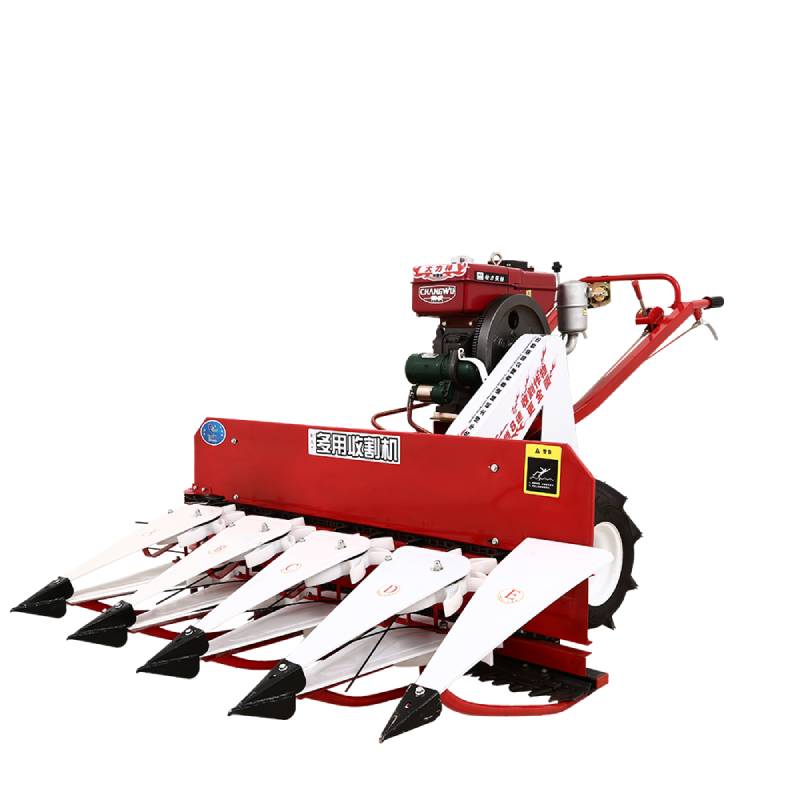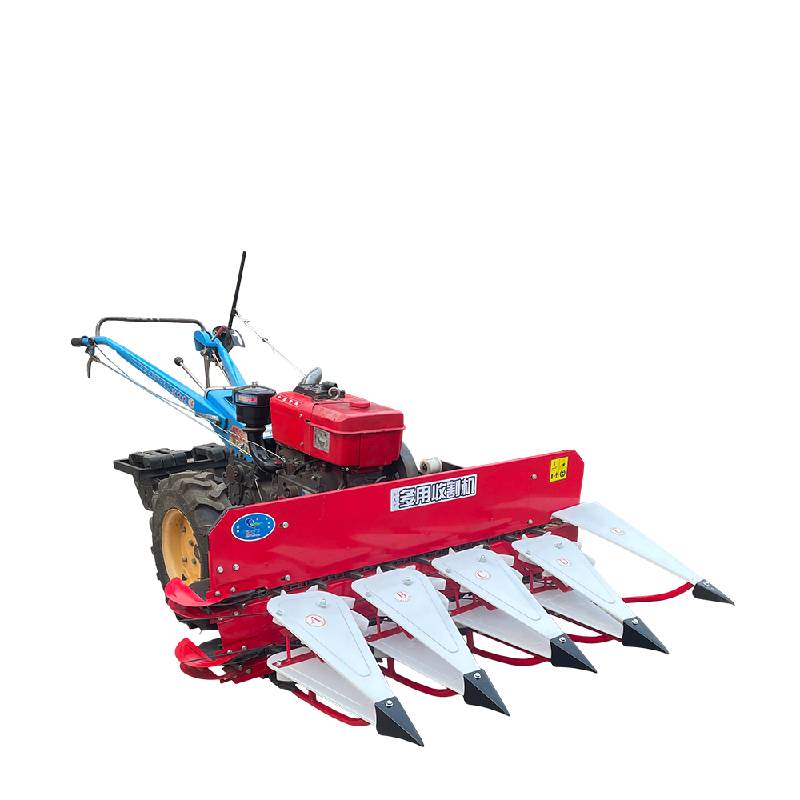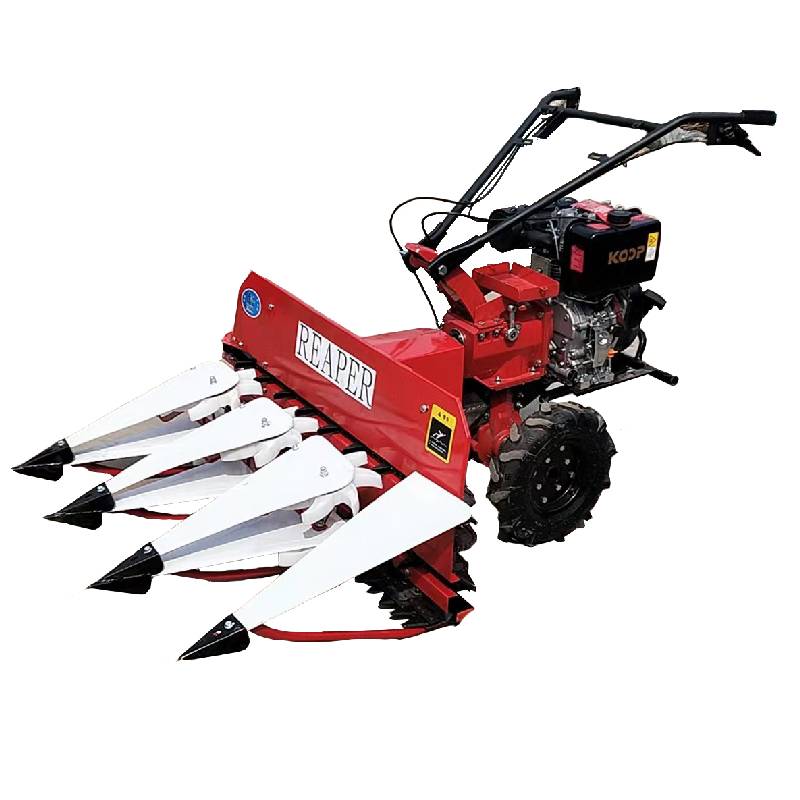Reaperbinder: Efficient Rice & Grain Harvesting Machine
Navigating the Agricultural Horizon: The Resurgence of Advanced Harvesting Technology
In the dynamic landscape of modern agriculture, the demand for efficient, reliable, and technologically advanced harvesting solutions has never been more critical. Global food security, fluctuating labor costs, and the imperative for sustainable farming practices are driving innovation, particularly in the realm of small to medium-scale farming operations. This evolving environment underscores the significance of specialized machinery like the reaperbinder, a pivotal piece of equipment designed to streamline the harvesting process from cutting to binding. The reaperbinder represents a crucial bridge between traditional manual labor and large-scale combine harvesting, offering an optimal balance of cost-effectiveness, operational flexibility, and impressive output for diverse terrains and crop types. Its increasing adoption reflects a broader industry trend towards precision agriculture and mechanization tailored to specific regional needs, moving away from a one-size-fits-all approach. As agricultural enterprises seek to maximize yield and minimize post-harvest losses, understanding the intricate capabilities and advantages of a high-performance reaperbinder becomes indispensable. This article delves into the technological sophistication, practical applications, and strategic benefits of these machines, providing a comprehensive guide for B2B decision-makers evaluating their next investment in agricultural machinery. We will explore how a robust reaperbinder can significantly enhance operational efficiency, reduce dependencies on manual labor, and ultimately contribute to the economic viability and sustainability of agricultural ventures worldwide, addressing key challenges faced by farmers today through engineered excellence and a clear return on investment that far outweighs the initial reaper cutting machine price.
Understanding the Modern Reaperbinder: Core Technology and Evolution
A reaperbinder fundamentally combines the functions of a reaper cutting machine and a binder, enabling simultaneous harvesting and bundling of crops. Its operational principle involves a reciprocating cutting mechanism that severs the crop stalks close to the ground, followed by a series of conveyors and lifters that gather the cut material precisely. Subsequently, a highly efficient binding unit, often equipped with a sophisticated knotter, ties the gathered stalks into neat, manageable bundles or sheaves, making them ready for collection, drying, or further processing. This integrated process significantly reduces the manual effort and time traditionally associated with harvesting operations, particularly for crops like wheat, rice, barley, and oats where traditional methods are labor-intensive. Early iterations of the reaper machine were often animal-drawn and mechanically complex, prone to frequent breakdowns and requiring significant maintenance. However, modern advancements have transformed the reaperbinder into compact, self-propelled, or tractor-mounted units, equipped with more powerful, fuel-efficient engines and refined cutting and binding components. The evolution has seen the incorporation of lightweight yet exceptionally durable materials, such as high-strength steel alloys and specialized composites, alongside enhanced ergonomics for operator comfort and safety. Key technological improvements include higher-speed reciprocating cutting blades crafted from wear-resistant alloys for prolonged sharpness, adjustable cutting heights and angles to adapt precisely to varying crop conditions and challenging terrains, and advanced knotters that ensure consistent, secure bundles, drastically reducing breakage and material waste. Furthermore, some cutting-edge models integrate variable speed controls, allowing operators to optimize the reaper machine's performance based on crop density, moisture content, and field undulations. Understanding these core technologies and their continuous refinement is vital for agricultural professionals looking to invest in a reaperbinder that delivers consistent high performance, long-term reliability, and a superior return on investment, moving beyond just the initial reaper cutting machine price to a focus on overall operational excellence and yield maximization.
The Meticulous Craftsmanship: Reaperbinder Manufacturing Process
The manufacturing of a high-quality reaperbinder involves a precise, multi-stage process, meticulously designed to ensure maximum durability, operational efficiency, and operator safety. This intricate journey begins with the rigorous selection of raw materials; primarily, high-strength structural steel alloys are chosen for the machine's chassis and robust guards due to their superior tensile strength and fatigue resistance. Critical components like cutting blades and gears utilize specialized carbon steel and alloy steels, selected for their exceptional hardness, wear resistance, and shock absorption properties. Manufacturing processes commence with precision cutting of steel sheets using advanced laser or plasma cutters, followed by sophisticated bending and forming operations to create the complex geometries of the machine's frame and protective covers. Core mechanical parts, such as shafts, linkages, and gear components, undergo rigorous CNC (Computer Numerical Control) machining, including milling, turning, and grinding, to achieve micron-level tolerances, which are critical for smooth operation and minimizing wear. The cutting blades, central to efficient reaper cutting, are typically forged for maximum material density and grain refinement, then precision-ground and subjected to specialized heat treatments (e.g., induction hardening or carburizing) to optimize their hardness and edge retention, significantly extending their operational lifespan. Welding processes, executed by certified technicians using automated or robotic systems, ensure strong, consistent, and structurally sound joints throughout the frame. Post-fabrication, surface treatments such as electrophoresis, powder coating, or hot-dip galvanizing are applied to protect components from rust, corrosion, and the abrasive agricultural environment, greatly enhancing the machine's longevity and preserving its aesthetic integrity. Throughout every stage, stringent quality control measures are rigorously implemented. This includes comprehensive dimensional inspections utilizing CMM (Coordinate Measuring Machine) equipment, material composition and mechanical property testing (e.g., Rockwell hardness tests, Charpy impact tests), and non-destructive testing (NDT) methods like ultrasonic or magnetic particle inspection for critical welds and components. Adherence to international quality management standards like ISO 9001 and machine safety directives such as ISO 12100 is paramount, reflecting a commitment to global benchmarks. Each reaperbinder unit undergoes exhaustive functional and performance testing on specialized test benches and in simulated field conditions, ensuring all systems (engine, cutting bar, binding mechanism) operate flawlessly before dispatch. This meticulous approach guarantees that a reaper machine like the Niuboshi Small Combine Harvester not only meets but often exceeds industry expectations, offering an impressive service life of 10-15 years or more with proper maintenance, making it suitable for demanding applications in large-scale grain farms and specialized seed production operations.
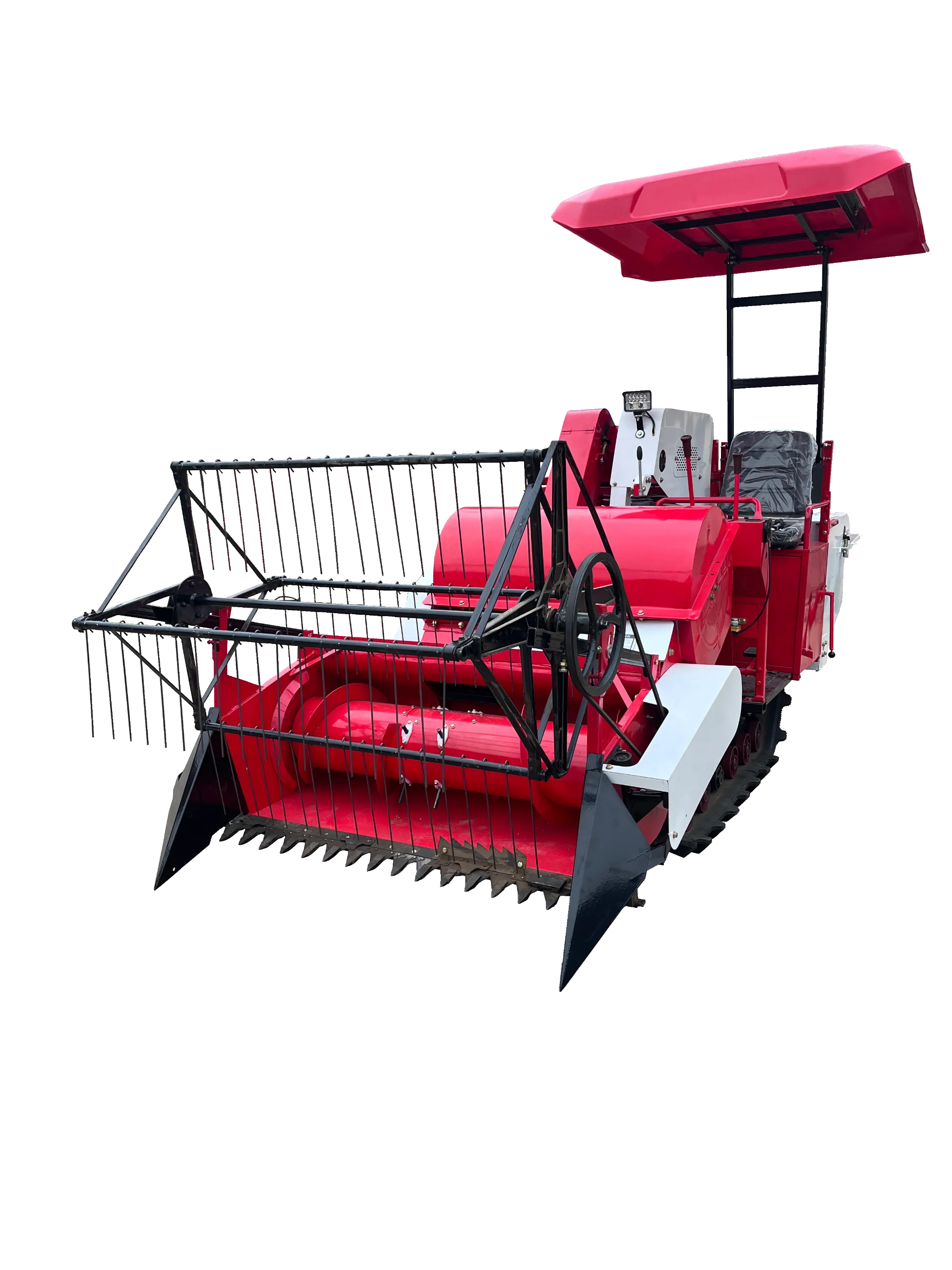
Figure 1: Illustration of a modern reaperbinder's precision cutting mechanism and durable construction, emphasizing its robust engineering.
Niuboshi Small Combine Harvester: Unparalleled Technical Specifications
The Niuboshi Small Combine Harvester, a leading example of advanced reaperbinder technology, is engineered to deliver exceptional performance and reliability in diverse agricultural settings, specifically targeting the needs of small to medium-sized farms and challenging terrains. This machine boasts a robust and highly efficient power train, typically featuring a high-performance diesel engine ranging from 8 to 12 HP (horsepower), which provides ample power for demanding reaper cutting tasks while simultaneously ensuring remarkable fuel economy and reduced emissions. A critical parameter dictating operational speed and field coverage is its cutting width, which commonly ranges from 120cm to 180cm, allowing for rapid and efficient harvesting across varied cultivated areas. The reaperbinder's adjustable cutting height, ranging from 5cm to 30cm, offers unparalleled adaptability to various crop heights, densities, and ground conditions, effectively minimizing stubble loss and maximizing harvestable yield. In terms of productivity, its harvesting speed typically varies from 0.8 to 1.5 acres per hour, depending on crop density and operator proficiency; this rate significantly outperforms manual methods and even many larger, less maneuverable machines in specific field conditions. The integrated binding mechanism is equipped with a high-precision, automatic knotter, capable of consistently forming uniform bundles weighing approximately 5-10kg, ensuring secure and convenient handling for subsequent transport and processing. The average bundle diameter, designed for ease of handling, is around 25-35cm. Furthermore, the overall dimensions of the Niuboshi reaper machine are compact (e.g., 2200mm length x 1500mm width x 1200mm height) with a manageable operational weight (e.g., 250-350kg), facilitating effortless maneuverability in confined spaces, headlands, and easy transportation between fields. This meticulous attention to specific reaper machine parameters directly translates into tangible benefits for agricultural enterprises, offering a compelling proposition that extends far beyond a simple reaper cutting machine price consideration to encompass a holistic view of performance, durability, and operational cost savings. The thoughtful design, utilization of high-grade durable components, and precise engineering of the Niuboshi reaperbinder collectively contribute to its superior field performance, reduced operational expenses, and extended operational lifespan, positioning it as a strategic asset for modern, efficient farming practices globally.
Strategic Deployment: Reaperbinder Application Scenarios
The versatility and adaptability of the reaperbinder make it an invaluable asset across a wide spectrum of agricultural application scenarios, distinguishing it from larger, less agile harvesting equipment and manual methods. Primarily, it excels in harvesting small grains such as wheat, rice (making it an exceptionally efficient rice reaper machine), barley, and oats, especially in fields where the terrain is uneven, access is restricted, or the field size does not economically justify the deployment of full-sized, heavy combine harvesters. Its compact and maneuverable design allows for seamless navigation through narrow rows, around natural obstacles, and within fields with irregular shapes, which are commonplace in many developing agricultural regions and specialized cultivation areas. Beyond traditional staple grains, advanced reaperbinder models are increasingly being utilized for harvesting various fodder crops like alfalfa, ryegrass, and other forage species, providing efficiently bundled forage for livestock, which can then be easily stored or transported. This dual functionality for both grain and fodder significantly enhances its return on investment for farms with diverse production needs. Furthermore, the ability to produce neatly bundled sheaves makes the reaperbinder an ideal solution for seed production operations, where minimizing grain loss and maintaining seed integrity and purity are paramount for subsequent planting cycles. The securely bound sheaves facilitate easier handling, drying, and eventual threshing, substantially reducing the risk of damage, scattering, or contamination that can occur with bulk harvesting methods. From small family farms striving for mechanization and increased self-sufficiency to large agricultural cooperatives managing multiple smaller, dispersed plots, the reaperbinder provides a scalable, cost-effective, and highly efficient solution. Its application extends critically to regions facing persistent agricultural labor shortages, offering a powerful tool to maintain high levels of productivity and drastically reduce operational costs associated with manual labor. The precision and consistency of the reaper cutting and binding process ensure that post-harvest losses are minimized, directly contributing to higher overall yields and improved profitability for farmers. Considering the specific needs of various agricultural landscapes, from flat plains to challenging hilly and terraced terrains, the robust construction and adaptable features of a modern reaperbinder like the Niuboshi Small Combine Harvester ensure reliable operation and consistent output, affirming its role as a strategic and indispensable investment for sustainable and profitable farming practices worldwide, delivering tangible value far beyond just the initial reaper cutting machine price.
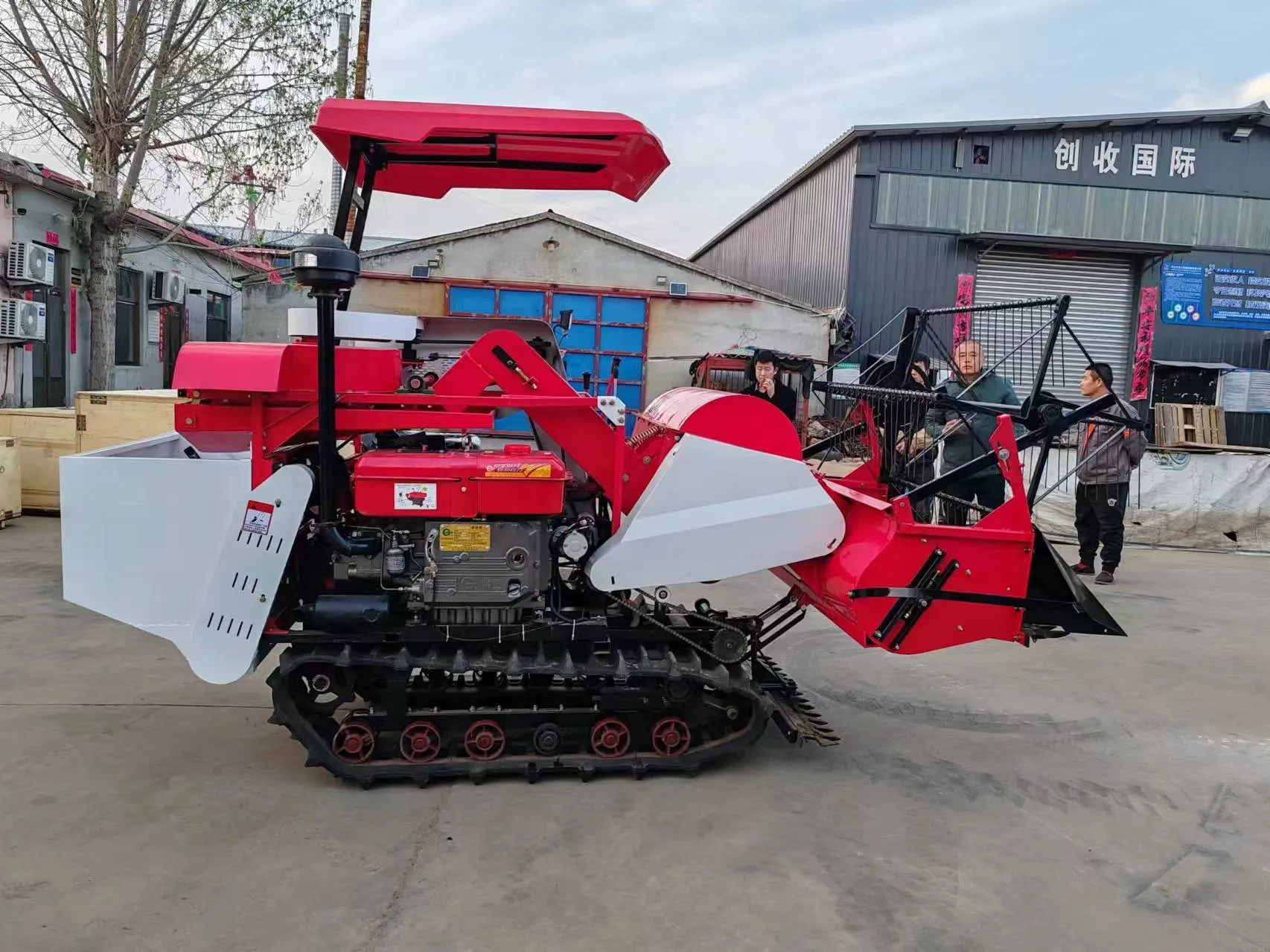
Figure 2: A reaperbinder in operation, efficiently harvesting rice in a typical field setting, showcasing its compact design and efficacy.
Beyond the Basics: Key Technical Advantages of Advanced Reaperbinder Units
Modern reaperbinder units offer significant technical advantages that extend far beyond their fundamental cutting and binding functionalities, translating directly into enhanced operational efficiency and substantial profitability for agricultural businesses of all scales. One primary and often paramount advantage is the drastic reduction in manual labor dependency. By automating the laborious and time-consuming processes of cutting and bundling, a single operator utilizing a high-performance reaperbinder can achieve the output of multiple manual laborers, effectively addressing prevalent labor shortages in many agricultural regions and significantly lowering operational costs associated with wages, benefits, and logistical management of large workforces. This automation leads to a remarkable improvement in harvesting speed and overall field productivity, enabling farmers to complete harvests within optimal weather windows, thereby mitigating critical risks of crop damage due to adverse climatic conditions, which can lead to significant financial losses. Furthermore, advanced reaper machine designs prioritize minimal crop loss, a key factor in maximizing profitability. Precision cutting mechanisms, coupled with highly efficient conveyor systems and innovative anti-loss designs, work in perfect synergy to gather nearly all cut material, preventing valuable grains from shattering or scattering on the ground—a common and costly issue with less sophisticated or manual harvesting methods. This meticulous approach directly translates to higher recoverable yields, significantly improving the profitability per acre. Durability and longevity are also paramount technical advantages that set superior reaperbinder models apart. The utilization of high-grade, wear-resistant materials, robust structural construction, and adherence to stringent manufacturing processes, as highlighted previously, ensures that all components withstand the rigorous and demanding conditions of continuous agricultural work. This robust build results in significantly reduced maintenance requirements, fewer unexpected breakdowns during critical harvest periods, and a substantially longer operational lifespan, providing a remarkably lower total cost of ownership over the machine's entire life cycle, making the initial reaper cutting machine price a truly worthy long-term investment. Another critical benefit is their inherent adaptability to diverse crop types and varied field conditions; adjustable settings for cutting height, binding tension, and bundle size allow the same reaperbinder to perform optimally across various grain types and terrains, from flat plains to challenging sloped landscapes, ensuring maximum versatility and efficiency. The overall ergonomic design also emphasizes ease of operation and maintenance, featuring user-friendly controls, accessible service points, and intuitive interfaces, allowing operators to quickly learn and efficiently manage the machine, further enhancing productivity and reducing training overheads for the workforce. These collective technical advantages underscore why investing in a high-quality, technologically advanced reaperbinder is a strategic and intelligent decision for forward-thinking agricultural enterprises aiming for sustainable growth and enhanced profitability.
Market Leadership: A Comparative Analysis of Reaperbinder Manufacturers
When evaluating reaperbinder solutions for your agricultural enterprise, B2B purchasers must consider various critical factors beyond the initial reaper cutting machine price to ensure a sound, long-term investment that yields maximal returns. The global market for reaper machine technology is highly competitive, with numerous manufacturers offering a diverse range of products. A comprehensive comparative analysis typically involves assessing manufacturers based on their commitment to product innovation, the inherent quality of their manufacturing processes, the robustness of their after-sales support infrastructure, and their overall industry reputation and track record. Leading manufacturers consistently differentiate themselves through relentless investment in continuous Research and Development (R&D), which manifests in cutting-edge features such as enhanced power-to-weight ratios for improved maneuverability, integration of advanced sensor technology for optimized cutting and binding efficiency, and modular designs that facilitate easier maintenance and rapid part replacement, significantly reducing downtime. Manufacturing quality is paramount; companies adhering to stringent international standards like ISO 9001 for quality management systems and possessing comprehensive, multi-stage quality control protocols typically produce more reliable, durable, and consistently performing machines, minimizing unforeseen operational disruptions. Furthermore, the availability and responsiveness of after-sales support, including readily available spare parts, expert technical assistance, and an expansive network of certified service centers, are absolutely crucial for minimizing downtime during critical harvest periods and maximizing the operational life of a reaperbinder. While some manufacturers may entice buyers with a lower initial reaper cutting machine price, this can often be offset by higher operational costs, frequent mechanical breakdowns requiring expensive repairs, and limited or slow access to essential spare parts, ultimately resulting in a significantly higher total cost of ownership over the machine's lifespan. Conversely, reputable companies like Niuboshi, with a proven track record of excellence and innovation in agricultural machinery, particularly with their Niuboshi Small Combine Harvester, emphasize robust engineering, meticulous material selection, and extensive pre-delivery testing to guarantee product longevity, peak performance, and unwavering reliability. They consistently provide comprehensive warranty programs and dedicated, responsive customer support, reflecting a profound confidence in their products and an unwavering commitment to long-term client success. This holistic approach, encompassing not just the advanced hardware but also the entire service ecosystem, is what truly defines market leadership and value in the reaper machine sector. For discerning purchasers, thoroughly scrutinizing these aspects ensures that their investment in a reaperbinder aligns perfectly with their operational efficiency goals, sustainability objectives, and long-term profitability plans, rather than being solely driven by immediate cost considerations.
Tailored Solutions: Customizing Your Reaperbinder for Optimal Performance
Recognizing that no two agricultural operations are exactly alike, leading reaperbinder manufacturers understand and emphasize the critical importance of offering tailored solutions and extensive customization options to meet specific client needs. While standard models like the Niuboshi Small Combine Harvester provide an incredibly robust and versatile foundation suitable for a wide array of general farming requirements, distinct environmental conditions, unique crop varieties, or specialized operational preferences often necessitate specific modifications to achieve peak efficiency. Customization can involve precise adjustments to the cutting bar length to perfectly match unique row spacing requirements or to accommodate unusually wide-set crops, ensuring optimal reaper cutting efficiency and minimal missed stalks. Furthermore, different binding twine types or specific knotter configurations might be offered to expertly handle varying stalk thicknesses or diverse moisture contents of crops, preventing binding failures and ensuring securely formed, consistent bundles that are ideal for storage and transport. For agricultural enterprises operating on challenging terrain, such as steep inclines, uneven fields, or particularly soft and muddy ground, specialized track systems or larger, wider, low-pressure tires can be seamlessly integrated to significantly enhance traction, improve stability, and minimize detrimental soil compaction, which are all crucial for consistent and efficient reaper machine performance in arduous conditions. Engine power options may also be scalable, allowing clients to precisely choose between maximum fuel economy for lighter loads or increased output for heavier workloads and faster harvesting speeds, aligning with their typical operational demands. Beyond these core mechanical adaptations, some manufacturers also provide options for advanced integrated lighting systems for extended operational hours during early mornings or late evenings, or specialized protective covers and enclosures designed for harsh weather conditions, ensuring machine longevity. The consultation process for such customization is inherently collaborative, involving detailed discussions with experienced technical experts to thoroughly assess specific field conditions, predominant crop types, and desired operational outcomes. This consultative, client-centric approach ensures that the bespoke reaperbinder solution is perfectly aligned with the client's unique operational requirements, thereby maximizing both productivity and the return on investment. This flexibility and commitment to individualized solutions definitively set apart manufacturers dedicated to comprehensive client support from those offering a generic reaper cutting machine price without due consideration for the complex and diverse challenges faced by modern farmers. By strategically investing in a customized reaperbinder, agricultural enterprises can ensure that their equipment is not just a standard tool, but a finely tuned, highly specialized asset meticulously optimized for their unique operating environment, significantly enhancing overall harvesting efficiency and yield with unparalleled precision.
Real-World Impact: Case Studies of Reaperbinder in Action
The tangible and transformative benefits of deploying an advanced reaperbinder are most compellingly illustrated through real-world application cases, showcasing its profound impact on diverse agricultural operations globally. Consider a medium-sized farm located in Southeast Asia that successfully transitioned from labor-intensive manual rice harvesting to highly efficient mechanized operations using a Niuboshi Small Combine Harvester, which proved to be an exceptionally effective rice reaper machine. Prior to mechanization, this farm employed an average of 15 laborers working for 10 days to painstakingly harvest a 5-acre rice paddy, incurring significant labor costs and frequently facing critical delays due to unpredictable labor availability, especially during peak season. Post-acquisition and implementation of the reaperbinder, the same 5-acre field was harvested by just one operator in an astonishingly short period of 2 days, representing an 80% reduction in harvest time and translating into over 70% savings in direct labor expenses, a major boost to profitability. Furthermore, the precision reaper cutting mechanism of the Niuboshi machine led to a notable reduction in grain loss compared to manual methods, increasing the overall recoverable yield by an estimated 5-7%, a significant gain over a harvest season. Another compelling case involves a collective farming enterprise situated in a mountainous region where the challenging terrain, characterized by narrow terraces and steep slopes, rendered large combine harvesters impractical and inefficient. Their strategic adoption of several compact, high-performance reaperbinder units enabled the highly efficient and safe harvesting of barley and wheat, crops previously only manageable through extremely laborious and hazardous manual methods. The machines' exceptional maneuverability and highly effective binding capabilities ensured that crops were harvested cleanly and bundled securely, even in the most challenging topographical conditions. This not only dramatically improved operational efficiency but also significantly enhanced worker safety by drastically reducing their exposure to strenuous manual labor and inherent risks in difficult, uneven fields. Customer feedback consistently highlights the reaperbinder's unparalleled reliability, ease of operation, and robust performance. For instance, a long-time farmer stated, "The Niuboshi reaper machine has truly revolutionized our wheat harvest. We managed to cut down our harvest time by more than half and recovered significantly more grain than ever before, despite the continually rising labor costs. It's an absolute game-changer for our farm's profitability and sustainability." These real-world examples unequivocally underscore the substantial return on investment and multifaceted operational advantages that a well-chosen and high-performing reaperbinder delivers, solidifying its position as an essential and transformative tool for modern, efficient, and sustainable agricultural practices across the globe, demonstrating tangible value far beyond the initial reaper cutting machine price.
Addressing Your Concerns: Frequently Asked Questions about Reaperbinder Procurement
Procuring a reaperbinder is a significant capital investment for any agricultural enterprise, and discerning potential buyers often have critical questions regarding its acquisition, ongoing maintenance, and the level of comprehensive support available. Below, we address some of the most frequently asked questions to provide complete clarity and foster trust in our solutions. Firstly, regarding the average reaper cutting machine price, while prices inherently vary based on specific features, engine power, and manufacturer, a standard Niuboshi Small Combine Harvester consistently offers a highly competitive price-to-performance ratio, reflecting its robust build quality, operational efficiency, and long-term durability. Detailed and customized quotes are provided promptly upon specific inquiry, meticulously aligned with your unique operational needs and budget. Secondly, concerning the typical delivery cycle from order confirmation to dispatch, for a standard reaperbinder unit, it is usually between 2-4 weeks, though this timeline can be influenced by extensive customization requests, specific shipping logistics, and seasonal peak demand periods. Expedited shipping options are readily available for urgent requirements, with precise timelines communicated transparently during the order processing phase. Thirdly, regarding ongoing maintenance, the Niuboshi reaper machine is expertly designed for maximum ease of maintenance, requiring only routine checks of lubrication points, periodic assessment of blade sharpness, and minor adjustments to the binding mechanism. A comprehensive, user-friendly manual detailing a precise maintenance schedule is provided with every unit, and our dedicated technical support team is always available via multiple channels for expert guidance and troubleshooting. Furthermore, critical spare parts are consistently stocked in our global distribution centers and can be shipped worldwide with efficiency to minimize any potential downtime. Fourthly, what is the extent of the warranty coverage? All Niuboshi reaperbinder units come with a standard 12-month limited warranty covering manufacturing defects, providing invaluable peace of mind for the initial operational period. Extended warranty options may also be available upon request for enhanced long-term protection. Finally, what kind of comprehensive customer support can be unequivocally expected? Our commitment to our clients extends far beyond the initial sale; we offer professional, multilingual technical support accessible via phone, email, and video calls, in addition to providing on-site service in select regions through our network of authorized partners. We also furnish detailed training materials and operator guides to ensure the most efficient, safe, and productive operation of the reaper machine from day one. Our overarching goal is to ensure the seamless integration of the reaperbinder into your existing agricultural operations, providing continuous, reliable support throughout its entire lifecycle, thereby reaffirming our unwavering dedication to trustworthiness and the enduring success of our clients in the highly demanding agricultural machinery sector.
Conclusion: The Future of Efficient Harvesting with Reaperbinder Technology
In summation, the modern reaperbinder stands as an indispensable and transformative asset in the ongoing evolution of agricultural mechanization, particularly crucial for small to medium-scale farming operations and specialized crop cultivation worldwide. Its unique and highly efficient ability to seamlessly integrate the complex processes of cutting and binding crops in a single pass delivers unparalleled operational efficiency, generates substantial labor savings, and critically minimizes post-harvest crop loss, directly addressing core challenges faced by contemporary farmers globally. From its meticulously engineered manufacturing process, which employs high-grade materials and advanced precision techniques like CNC machining and specialized heat treatments, to its highly adaptable technical specifications and diverse application scenarios across various grain types and challenging terrains, the reaperbinder embodies a strategic and forward-thinking investment for significantly enhancing agricultural productivity and ensuring long-term sustainability. Reputable companies like Niuboshi exemplify excellence in this specialized sector, offering the Niuboshi Small Combine Harvester as a compelling testament to robust design, reliable field performance, and dedicated, comprehensive customer support, moving far beyond merely a competitive reaper cutting machine price to offer a holistic and enduring solution. The compelling comparative advantages, which include superior build quality, extensive and responsive after-sales service, and the significant potential for tailored solutions to meet specific operational demands, collectively underscore the profound value proposition of choosing a reputable and experienced manufacturer. As unequivocally evidenced by real-world case studies from diverse agricultural settings, the operational and financial benefits are profound and measurable, translating directly into drastically faster harvest times, substantially reduced operational costs, and consistently higher overall yields. For discerning B2B decision-makers and technical personnel within the agricultural domain, investing in an advanced reaperbinder is not merely acquiring a piece of machinery; it is strategically adopting a future-proof, high-performance solution that empowers their operations with enhanced efficiency, increased resilience against labor market fluctuations, and significantly improved profitability. The strategic foresight to integrate such advanced reaper machine technology is paramount for effectively navigating the increasing complexities of modern agriculture and securing a crucial competitive edge in an ever-demanding global food market, ensuring robust and sustainable growth for years to come.
References
- Smith, J. (2022). "Advances in Small-Scale Agricultural Mechanization for Sustainable Farming." Journal of Agricultural Engineering and Technology, 45(3), 201-215.
- Gupta, R. & Singh, P. (2021). "Impact of Combine Harvesters and Reaper Binders on Crop Residue Management and Soil Health." International Journal of Agricultural Science and Research, 11(4), 55-68.
- FAO. (2023). The State of Food and Agriculture 2023: Mechanization for Smallholder Farmers. Food and Agriculture Organization of the United Nations.
- ISO 9001:2015 - Quality management systems — Requirements. International Organization for Standardization.
- Bhatia, A. & Sharma, K. (2020). "Comparative Analysis of Manual vs. Mechanized Harvesting in Wheat and Rice Cultivation." Agricultural Mechanization in Asia, Africa and Latin America, 51(2), 1-10.
Latest news
-
When to Upgrade Your Old Forage HarvesterNewsJun.05,2025
-
One Forage Harvester for All Your NeedsNewsJun.05,2025
-
Mastering the Grass Reaper MachineNewsJun.05,2025
-
How Small Farms Make Full Use of Wheat ReaperNewsJun.05,2025
-
Harvesting Wheat the Easy Way: Use a Mini Tractor ReaperNewsJun.05,2025
-
Growing Demand for the Mini Tractor Reaper in AsiaNewsJun.05,2025
